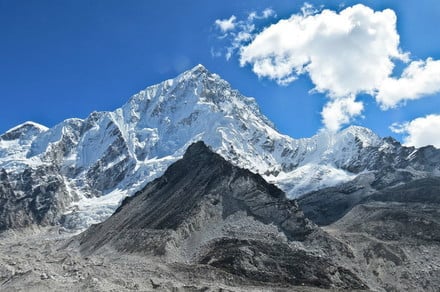An international team of scientists recently made it to the top of Mount Everest to install a number of weather stations, with one of them, not surprisingly considering its location, becoming the highest such station on Earth.
And that wasn’t the team’s only achievement.
Led by the National Geographic Society and Nepal’s Tribhuvan University, the expedition members also “collected the highest-ever ice core … completed the highest-elevation helicopter-based lidar scan [of an Everest base camp and nearby glacier], expanded the elevation records for high-dwelling species, and documented the history of the mountain’s glaciers,” according to a report by National Geographic (NG).
The equipment set up on Everest will allow researchers, climbers, and other interested parties to access up-to-date information about conditions on the world’s highest mountain, which has an elevation of 8,848 meters (29,029 feet).
The eight-nation team installed a total of five weather stations, the highest one at an elevation of 8,430 meters, while the highest ice core — one of several collected — was taken at 8,020 meters.
It’s also hoped that data collected from the weather stations and ice cores, along with other research carried out by the team, will help communities in the region deal more effectively with issues connected to climate change, such as the risk to water supplies caused by rapidly melting glaciers.
“Climate change is one of the biggest challenges facing humanity and there is still much to learn about how it’s already altered the world, from the deepest parts of the ocean to its tallest mountains,” Jonathan Baillie, executive vice president and chief scientist at the National Geographic Society, said in NG’s report.
“By harnessing our 131-year history of exploration and venturing into some of the most extreme environments on the planet, we will fill critical data gaps on the world’s life support systems and drive solutions to assure that they can continue to fuel our future.”
With such a wide variety of work carried out, the project has been described as the most comprehensive single scientific expedition on Everest to date. Findings from the expedition will be published once a full analysis of the materials and data has been carried out.
Editors’ Recommendations
- Water on Earth could have an interstellar origin, according to comet data
- See a fly-over of Mars and track the path Curiosity will take up Mount Sharp
- Historic SpaceX Falcon 9 core to go on public display in Houston
- Geoengineering is risky and unproven, but soon it might be necessary
- Curiosity data shows how asteroid impact could have made Mars habitable

